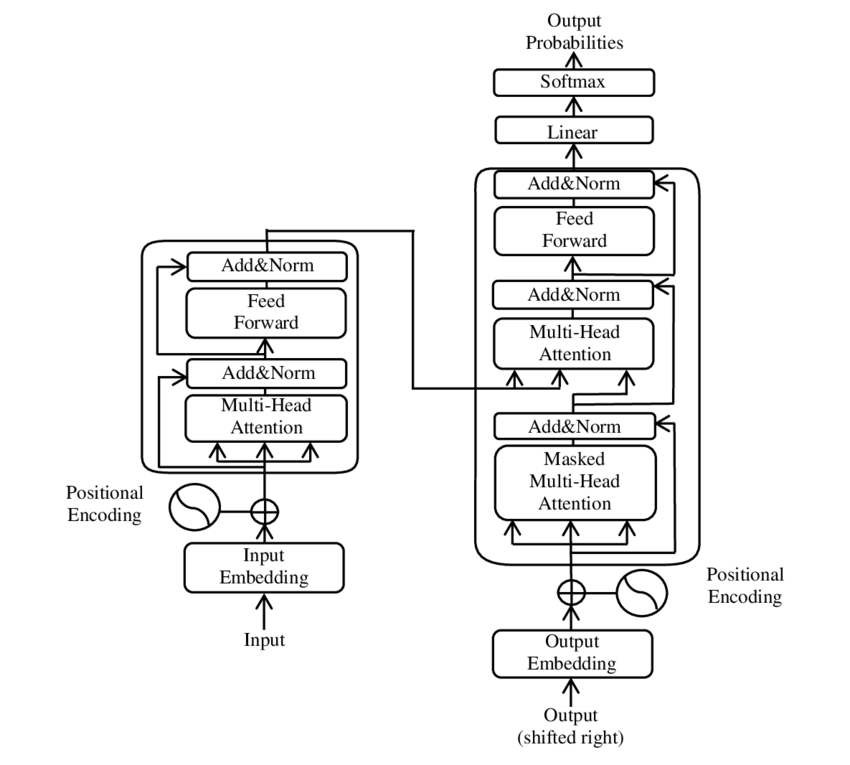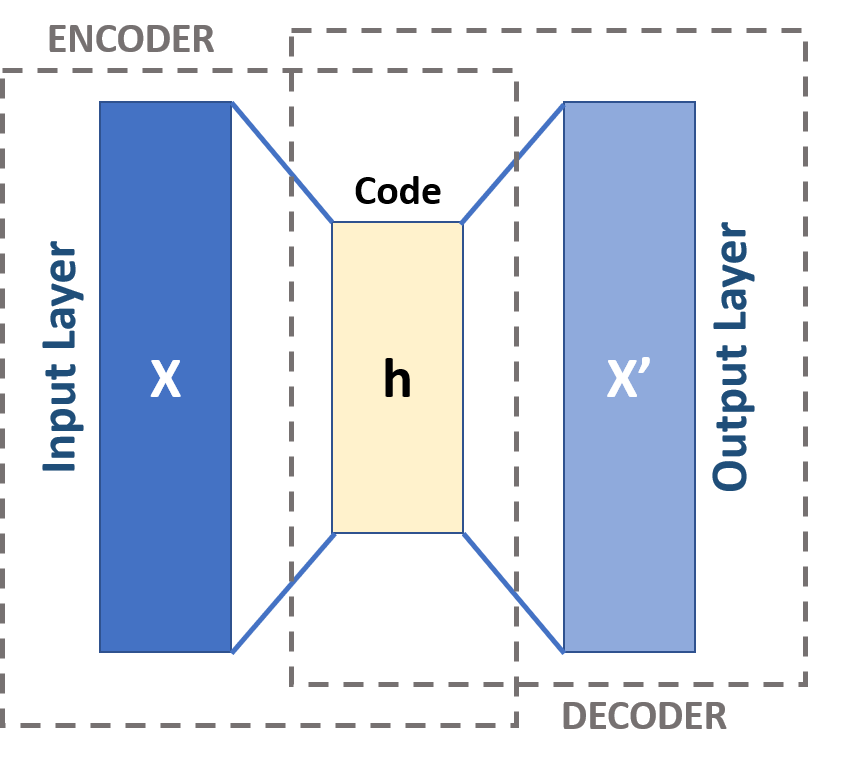|
BERT (language Model)
Bidirectional Encoder Representations from Transformers (BERT) is a transformer-based machine learning technique for natural language processing (NLP) pre-training developed by Google. BERT was created and published in 2018 by Jacob Devlin and his colleagues from Google. In 2019, Google announced that it had begun leveraging BERT in its search engine, and by late 2020 it was using BERT in almost every English-language query. A 2020 literature survey concluded that "in a little over a year, BERT has become a ubiquitous baseline in NLP experiments", counting over 150 research publications analyzing and improving the model. The original English-language BERT has two models: (1) the BERTBASE: 12 encoders with 12 bidirectional self-attention heads, and (2) the BERTLARGE: 24 encoders with 16 bidirectional self-attention heads. Both models are pre-trained from unlabeled data extracted from the BooksCorpus with 800M words and English Wikipedia with 2,500M words. Architecture BERT is a ... [...More Info...] [...Related Items...] OR: [Wikipedia] [Google] [Baidu] |
Transformer (machine Learning Model)
A transformer is a deep learning model that adopts the mechanism of self-attention, differentially weighting the significance of each part of the input data. It is used primarily in the fields of natural language processing (NLP) and computer vision (CV). Like recurrent neural networks (RNNs), transformers are designed to process sequential input data, such as natural language, with applications towards tasks such as translation and text summarization. However, unlike RNNs, transformers process the entire input all at once. The attention mechanism provides context for any position in the input sequence. For example, if the input data is a natural language sentence, the transformer does not have to process one word at a time. This allows for more parallelization than RNNs and therefore reduces training times. Transformers were introduced in 2017 by a team at Google Brain and are increasingly the model of choice for NLP problems, replacing RNN models such as long short-term memor ... [...More Info...] [...Related Items...] OR: [Wikipedia] [Google] [Baidu] |
English Language
English is a West Germanic language of the Indo-European language family, with its earliest forms spoken by the inhabitants of early medieval England. It is named after the Angles, one of the ancient Germanic peoples that migrated to the island of Great Britain. Existing on a dialect continuum with Scots, and then closest related to the Low Saxon and Frisian languages, English is genealogically West Germanic. However, its vocabulary is also distinctively influenced by dialects of France (about 29% of Modern English words) and Latin (also about 29%), plus some grammar and a small amount of core vocabulary influenced by Old Norse (a North Germanic language). Speakers of English are called Anglophones. The earliest forms of English, collectively known as Old English, evolved from a group of West Germanic (Ingvaeonic) dialects brought to Great Britain by Anglo-Saxon settlers in the 5th century and further mutated by Norse-speaking Viking settlers starting in the 8th and 9th ... [...More Info...] [...Related Items...] OR: [Wikipedia] [Google] [Baidu] |
Computational Linguistics
Computational linguistics is an Interdisciplinarity, interdisciplinary field concerned with the computational modelling of natural language, as well as the study of appropriate computational approaches to linguistic questions. In general, computational linguistics draws upon linguistics, computer science, artificial intelligence, mathematics, logic, philosophy, cognitive science, cognitive psychology, psycholinguistics, anthropology and neuroscience, among others. Sub-fields and related areas Traditionally, computational linguistics emerged as an area of artificial intelligence performed by computer scientists who had specialized in the application of computers to the processing of a natural language. With the formation of the Association for Computational Linguistics (ACL) and the establishment of independent conference series, the field consolidated during the 1970s and 1980s. The Association for Computational Linguistics defines computational linguistics as: The term "comp ... [...More Info...] [...Related Items...] OR: [Wikipedia] [Google] [Baidu] |
Natural Language Processing
Natural language processing (NLP) is an interdisciplinary subfield of linguistics, computer science, and artificial intelligence concerned with the interactions between computers and human language, in particular how to program computers to process and analyze large amounts of natural language data. The goal is a computer capable of "understanding" the contents of documents, including the contextual nuances of the language within them. The technology can then accurately extract information and insights contained in the documents as well as categorize and organize the documents themselves. Challenges in natural language processing frequently involve speech recognition, natural-language understanding, and natural-language generation. History Natural language processing has its roots in the 1950s. Already in 1950, Alan Turing published an article titled "Computing Machinery and Intelligence" which proposed what is now called the Turing test as a criterion of intelligence, t ... [...More Info...] [...Related Items...] OR: [Wikipedia] [Google] [Baidu] |
TensorFlow
TensorFlow is a free and open-source software library for machine learning and artificial intelligence. It can be used across a range of tasks but has a particular focus on training and inference of deep neural networks. "It is machine learning software being used for various kinds of perceptual and language understanding tasks" – Jeffrey Dean, minute 0:47 / 2:17 from YouTube clip TensorFlow was developed by the Google Brain team for internal Google use in research and production. The initial version was released under the Apache License 2.0 in 2015. Google released the updated version of TensorFlow, named TensorFlow 2.0, in September 2019. TensorFlow can be used in a wide variety of programming languages, including Python, JavaScript, C++, and Java. This flexibility lends itself to a range of applications in many different sectors. History DistBelief Starting in 2011, Google Brain built DistBelief as a proprietary machine learning system based on deep learning neural n ... [...More Info...] [...Related Items...] OR: [Wikipedia] [Google] [Baidu] |
FastText
fastText is a library for learning of word embeddings and text classification created by Facebook's AI Research (FAIR) lab. The model allows one to create an unsupervised learning or supervised learning algorithm for obtaining vector representations for words. Facebook makes available pretrained models for 294 languages. Several papers describe the techniques used by fastText. See also * Word2vec * GloVe *Neural Network *Natural Language Processing Natural language processing (NLP) is an interdisciplinary subfield of linguistics, computer science, and artificial intelligence concerned with the interactions between computers and human language, in particular how to program computers to pro ... References External links fastText*https://research.fb.com/downloads/fasttext/ Natural language processing software Software using the BSD license {{free-software-stub ... [...More Info...] [...Related Items...] OR: [Wikipedia] [Google] [Baidu] |
Thought Vector
''Thought vector'' is a term popularized by Geoffrey Hinton, the prominent deep-learning researcher now at Google, which uses vectors based on natural language In neuropsychology, linguistics, and philosophy of language, a natural language or ordinary language is any language that has evolved naturally in humans through use and repetition without conscious planning or premeditation. Natural languages ... to improve its search results. References Search algorithms {{comp-sci-stub ... [...More Info...] [...Related Items...] OR: [Wikipedia] [Google] [Baidu] |
Feature Learning
In machine learning, feature learning or representation learning is a set of techniques that allows a system to automatically discover the representations needed for feature detection or classification from raw data. This replaces manual feature engineering and allows a machine to both learn the features and use them to perform a specific task. Feature learning is motivated by the fact that machine learning tasks such as classification often require input that is mathematically and computationally convenient to process. However, real-world data such as images, video, and sensor data has not yielded to attempts to algorithmically define specific features. An alternative is to discover such features or representations through examination, without relying on explicit algorithms. Feature learning can be either supervised, unsupervised or self-supervised. * In supervised feature learning, features are learned using labeled input data. Labeled data includes input-label pairs where the ... [...More Info...] [...Related Items...] OR: [Wikipedia] [Google] [Baidu] |
Feature Extraction
In machine learning, pattern recognition, and image processing, feature extraction starts from an initial set of measured data and builds derived values (features) intended to be informative and non-redundant, facilitating the subsequent learning and generalization steps, and in some cases leading to better human interpretations. Feature extraction is related to dimensionality reduction. When the input data to an algorithm is too large to be processed and it is suspected to be redundant (e.g. the same measurement in both feet and meters, or the repetitiveness of images presented as pixels), then it can be transformed into a reduced set of features (also named a feature vector). Determining a subset of the initial features is called feature selection. The selected features are expected to contain the relevant information from the input data, so that the desired task can be performed by using this reduced representation instead of the complete initial data. General Feature extractio ... [...More Info...] [...Related Items...] OR: [Wikipedia] [Google] [Baidu] |
Document-term Matrix
A document-term matrix is a mathematical matrix that describes the frequency of terms that occur in a collection of documents. In a document-term matrix, rows correspond to documents in the collection and columns correspond to terms. This matrix is a specific instance of a document-feature matrix where "features" may refer to other properties of a document besides terms. It is also common to encounter the transpose, or term-document matrix where documents are the columns and terms are the rows. They are useful in the field of natural language processing and computational text analysis. While the value of the cells is commonly the raw count of a given term, there are various schemes for weighting the raw counts such as, row normalizing (i.e. relative frequency/proportions) and tf-idf. Terms are commonly single words separated by whitespace or punctuation on either side (a.k.a. unigrams). In such a case, this is also referred to as "bag of words" representation because the counts ... [...More Info...] [...Related Items...] OR: [Wikipedia] [Google] [Baidu] |
Autoencoder
An autoencoder is a type of artificial neural network used to learn efficient codings of unlabeled data (unsupervised learning). The encoding is validated and refined by attempting to regenerate the input from the encoding. The autoencoder learns a representation (encoding) for a set of data, typically for dimensionality reduction, by training the network to ignore insignificant data (“noise”). Variants exist, aiming to force the learned representations to assume useful properties. Examples are regularized autoencoders (''Sparse'', ''Denoising'' and ''Contractive''), which are effective in learning representations for subsequent classification tasks, and ''Variational'' autoencoders, with applications as generative models. Autoencoders are applied to many problems, including facial recognition, feature detection, anomaly detection and acquiring the meaning of words. Autoencoders are also generative models which can randomly generate new data that is similar to the input da ... [...More Info...] [...Related Items...] OR: [Wikipedia] [Google] [Baidu] |
Word2vec
Word2vec is a technique for natural language processing (NLP) published in 2013. The word2vec algorithm uses a neural network model to learn word associations from a large corpus of text. Once trained, such a model can detect synonymous words or suggest additional words for a partial sentence. As the name implies, word2vec represents each distinct word with a particular list of numbers called a vector. The vectors are chosen carefully such that they capture the semantic and syntactic qualities of words; as such, a simple mathematical function (cosine similarity) can indicate the level of semantic similarity between the words represented by those vectors. Approach Word2vec is a group of related models that are used to produce word embeddings. These models are shallow, two-layer neural networks that are trained to reconstruct linguistic contexts of words. Word2vec takes as its input a large corpus of text and produces a vector space, typically of several hundred dimensions, with e ... [...More Info...] [...Related Items...] OR: [Wikipedia] [Google] [Baidu] |





